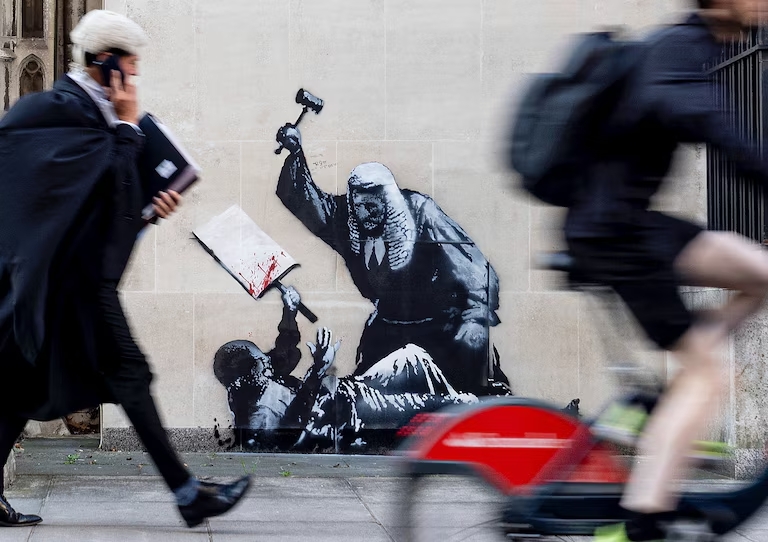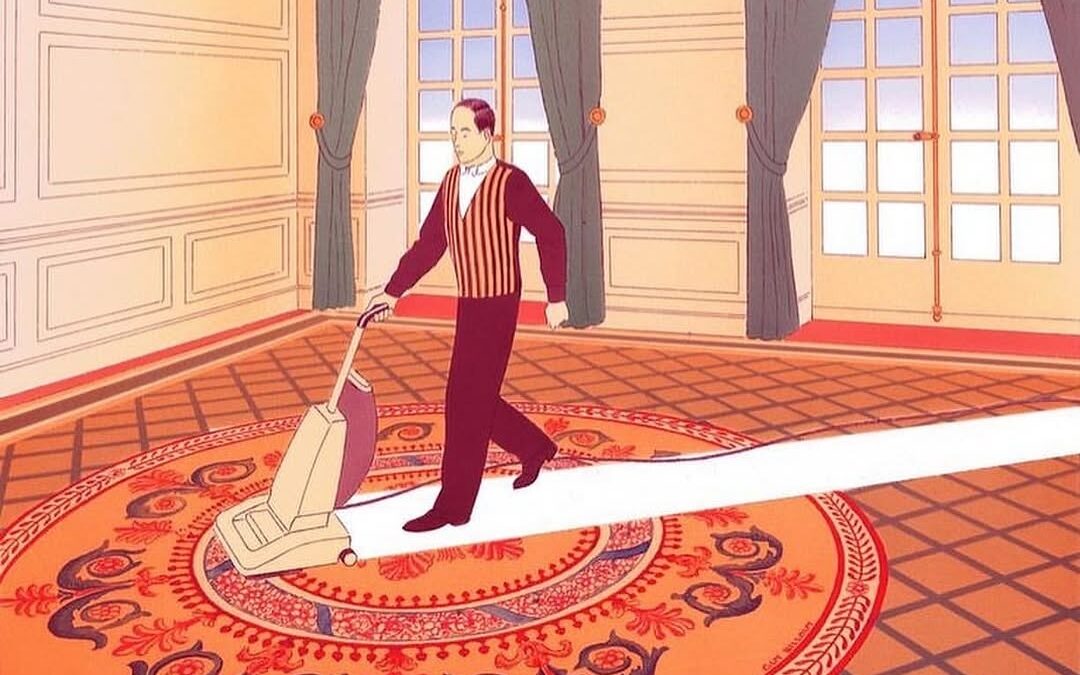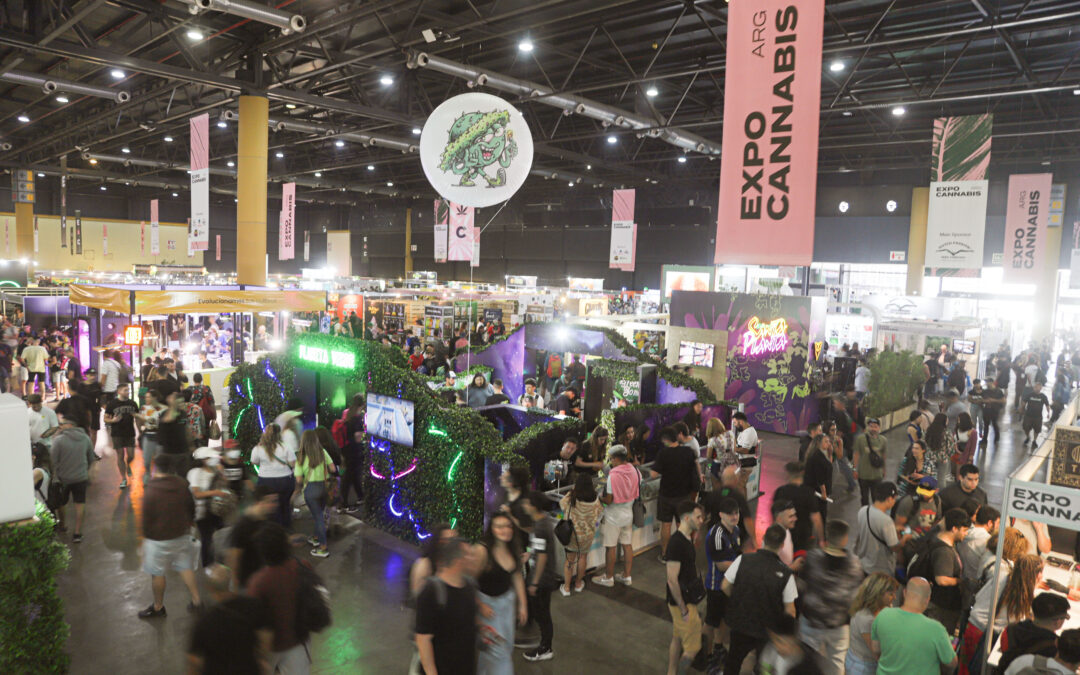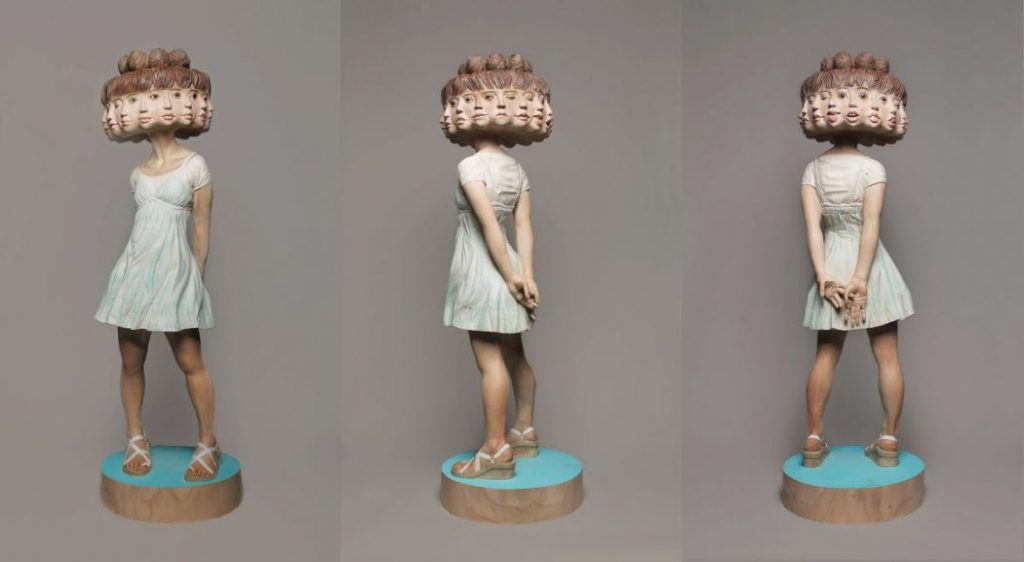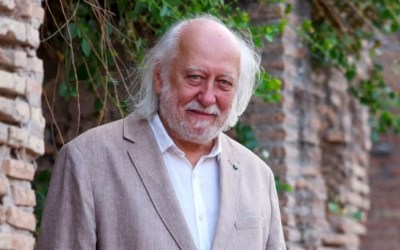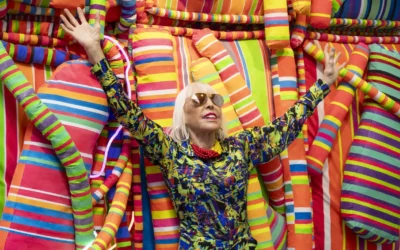A new Banksy at the Royal Courts of Justice was covered and scrubbed within days, reviving a wider debate on censorship, heritage rules and protest art.
The Banksy mural at the Royal Courts of Justice appeared suddenly and disappeared just as quickly, leaving behind a controversy that extends beyond art. Its removal highlights the clash between heritage protections, institutional authority and the role of protest art in public space.
What happened and when
A politically charged Banksy mural appeared on the Queen’s Building facade of London’s Royal Courts of Justice in early September 2025. The work depicted a judge in wig and gown raising a gavel over a fallen protester holding a blood-splattered placard. Within a short period, court authorities moved to cover and remove the piece, citing the protection of the historic complex and ongoing inquiries into potential criminal damage. The rapid intervention left a faint “ghost” image—an erasure that, paradoxically, amplified its message.
Why it matters
Banksy’s interventions often test the boundaries between public space, institutional power and free expression. The swift removal at one of the UK’s most symbolically charged legal sites reactivated long-standing questions: Who decides what constitutes vandalism versus culture? When a building is protected, does that protection extend to new cultural inscriptions made upon it? And how should public institutions respond when an unsanctioned artwork resonates globally in real time?
Heritage protections and the law
The Royal Courts of Justice complex is a protected heritage site; alterations to its fabric are tightly controlled. When an unsanctioned artwork appears on a listed building, stewards must weigh preservation duties against the artwork’s cultural value. In practice, that often means removal—especially when a work is simultaneously under investigation as potential criminal damage. The tension between heritage compliance and contemporary cultural relevance is at the heart of this case.
Reading the image
The mural’s stark palette—black, white and a splash of red—condenses its critique: the gavel becomes a blunt instrument, the blood on the placard a visual echo of violence and silencing. It is classic Banksy: legible at a glance, sharpened by irony, and sited with surgical precision. Installed at the very threshold of legal authority, the image asks whether institutions protect rights equitably, especially during moments of social friction.
Official confirmations and context
Banksy authenticated the work by sharing images on his official website. For factual reference about the venue and its protected status, consult the Royal Courts of Justice official information page. Additional insights and cultural reflections on the piece can also be found in this article about Banksy´s latest intervention, reinforcing the international scope of the debate it sparked.
For art travelers
For art travelers mapping culture through the city, the episode underscores London’s live conversation between street practice and institutional space. Even when a work is removed, the site accrues meaning: the trace, the story and the discourse around it become part of the urban itinerary. For more current developments and analyses from around the world, explore our News section.


